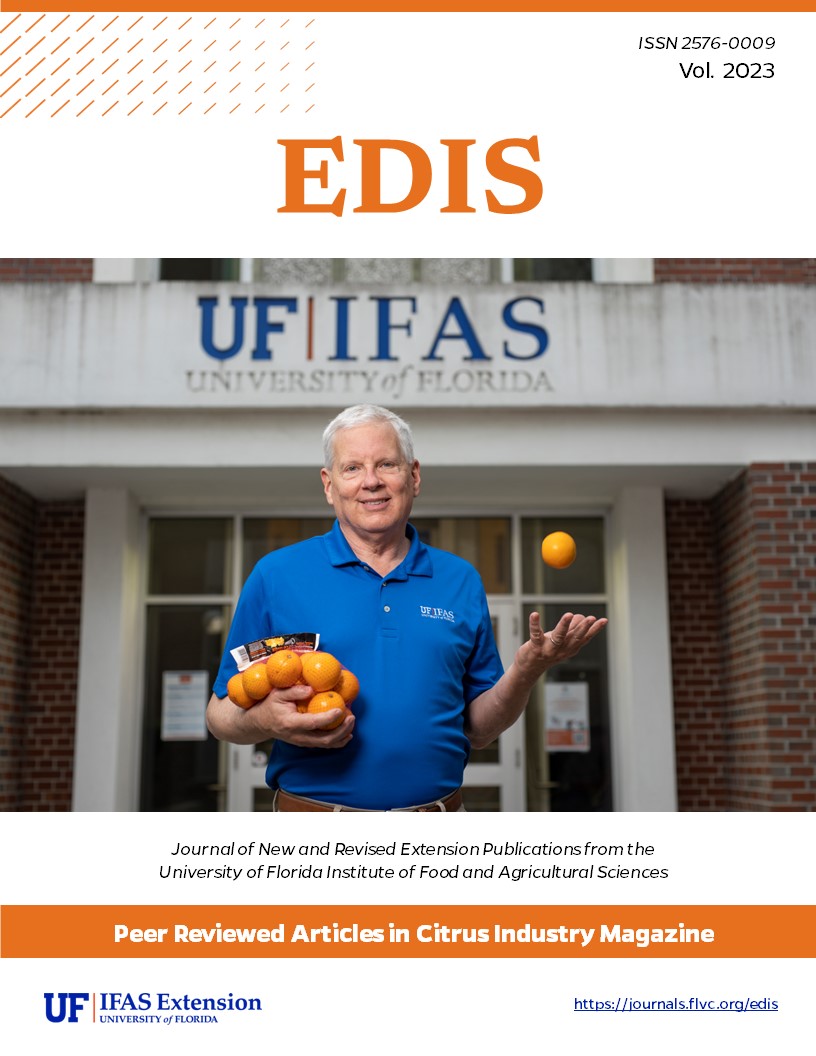Resumen
A growing consumer demand for natural compatible sweeteners have been recognized in recent years. Two effective solutions including using natural non-caloric sweeteners and natural sweetness-enhancing compounds have been proposed. Fruits have been considered as a good source of non-caloric sweeteners, and citrus is one of the most important agricultural commodities especially in the U.S. Until now there is only one sweetness modulator reported in citrus (hesperetin, in 1965). In our study, we have identified six sweeteners, one sweetness enhancer, and one bitter masking compound, among which seven were identified from the Citrus genus for the first time. The sweetener oxime V, which was a synthetic sweetener, was identified for the first time in the natural sources. Information developed in this study can be used to promote citrus consumption and future breeding.
Citas
Baldwin, E. A., J. Bai, A. Plotto, and M. A. Ritenour. 2014. “Citrus Fruit Quality Assessment: Producer and Consumer Perspectives.” Stewart Postharvest Rev. 10(2): 408.
DuBois, G. E., and I. Prakash. 2012. “Non-Caloric Sweeteners, Sweetness Modulators, and Sweetener Enhancers.” Annual Review of Food Science and Technology 3:353–380. https://doi.org/10.1146/annurev-food-022811-101236
Visvanathan, R., and G. Williamson. 2021. “Effect of Citrus Fruit and Juice Consumption on Risk of Developing Type 2 Diabetes: Evidence on Polyphenols from Epidemiological and Intervention Studies.” Trends in Food Science & Technology 115:133–146. https://doi.org/10.1016/j.tifs.2021.06.038
Wang, Z., F. G. Gmitter, J. W. Grosser, and Y. Wang. 2022. “Natural Sweeteners and Sweetness-Enhancing Compounds Identified in Citrus Using an Efficient Metabolomics-Based Screening Strategy.” Journal of Agricultural and Food Chemistry 70(34): 10593. https://doi.org/10.1021/acs.jafc.2c03515

